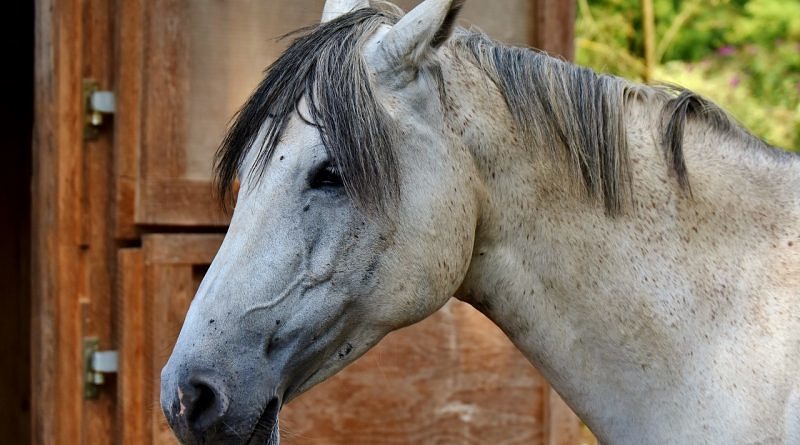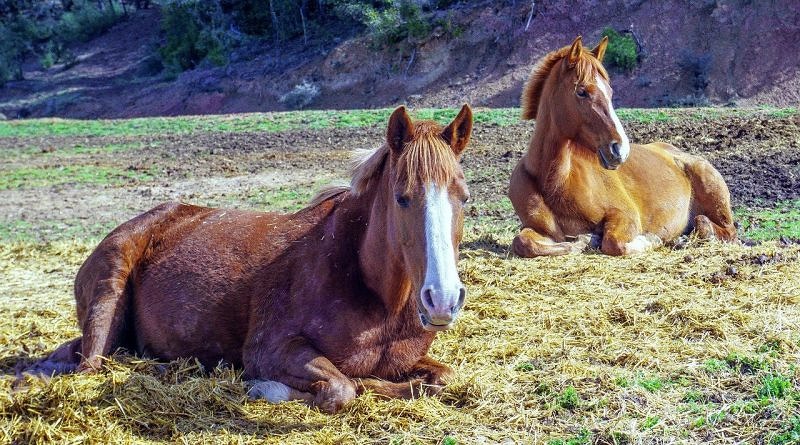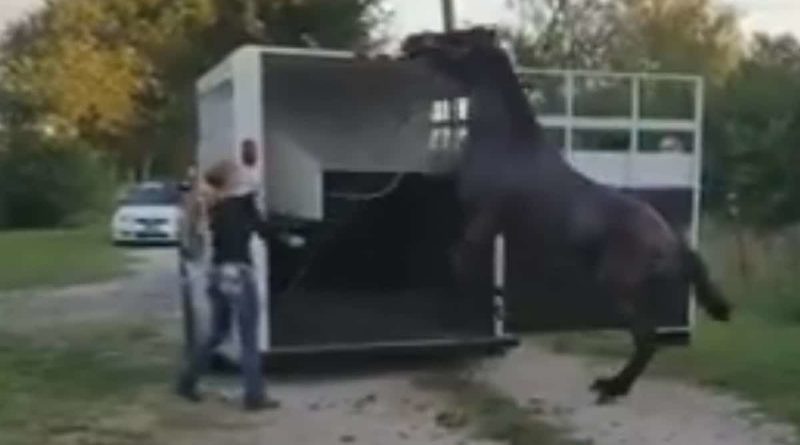Why am I struggling to train my horse?
Do you think you are using an effective training method? Why what YOU think doesn’t matter!
Traditional training methods (including Natural Horsemanship) rely predominantly on negative reinforcement – but they are not the only effective option. One of the stumbling blocks to improving our training methods so that they are both effective and kind is understanding how horses think about different contexts and the impact this has on the outcome of the training. You may have the very best intentions and think that what you are doing makes sense, and yet you aren’t making the progress you would like and your horse doesn’t seem to be enjoying themselves. You may be surprised to learn that what you think doesn’t matter – it is up to your horse to decide!
What is reinforcement?
Positive and negative reinforcement are not ‘training methods’. We talk about them like they are but what they really are is a way to categorise and describe how animals learn.
When we see an increase in how often a behaviour is repeated, we say it is the result of reinforcement. When this is because of the addition of something, we call it positive (as in ‘adding’). When it is due to the removal of something we call it negative (as in ‘taking away’).
When we use pressure and release to train a horse, the horse is learning from the removal of something the horse doesn’t like – in this case pressure. Therefore ‘pressure-release’ training uses negative reinforcement. When we say we are using positive reinforcement to train we add something nice that the horse wants or likes in order to reinforce the behaviour the horse is doing at that moment – typically food. Here is an overview of all four quadrants of operant conditioning if you would like to read more.
This has significant implications because it means that whether you are ‘using’ one or the other entirely depends on how your horse feels about it. Your intentions are irrelevant.
In fact, all kinds of reinforcement can occur with no agency involved at all and do so all the time. For instance, when you get hot in the sun and learn to move into shade, you are learning through negative reinforcement.
What kind of reinforcement am I using?
Many things can be experienced differently depending on who is experiencing them and their context. For example, pressure can be pleasant as well as aversive. We all know that a massage can feel good! Equally, food when you are really full is no longer pleasant and being force fed in that situation is aversive. Many experiences are also neutral – we neither feel the need to avoid them, nor seek them out.
Animals will learn through all the routes available to do so regardless of whether we specifically want them to or not! In many cases there is also overlap between different ways of learning and it’s often impossible to truly say which category learning falls under. Some even entail each other.
Some people strive to rely on only one category of reinforcement in their training methods but the reality is that these are artificial categories of convenience and a lot of learning will not fit neatly into a single category despite our intentions. In addition, whether you like it or not, your horse will learn in other ways too because learning is happening all the time, whether we are involved or not!
How can I cue a behaviour without applying pressure?
When we use negative reinforcement we often use pressure as both the cue and to create the desired response.
For example ‘loud’ body language or waving a rope/whip/stick-and-string at a horse creates forward motion by tapping into the horse’s flight response. With repetition the horse learns that moving makes the disconcerting behaviour of the human/equipment go away. Then we can refine this cue until a very small movement or sound on the trainer’s part elicits the desired response.
If you have been using negative reinforcement your whole life, it may be difficult to imagine how it is possible to train any other way. With positive reinforcement we tend to have our cues be more detached from the behaviour and it’s not immediately obvious how this would be possible.
For example the cue for raising a leg might be a hand gesture that is completely unrelated to the action This is achieved by first reinforcing a behaviour and then starting to pair the cue with that behaviour. We can opt to capture behaviour, free shape it, or elicit it to create opportunities to reward it. Which we choose depends on what we want to train and other factors such as the horse’s experience with the approach, how easily they become frustrated, time constraints etc. Putting the behaviour on cue is just one part of the process.
For example, if we want to train a horse to lie down, we might wait for the horse to roll/lie down (e.g. after being hosed off) and then offer a treat. After a few repetitions, the horse will learn that they consistently get a treat for this behaviour in this context. They might begin to repeat the behaviour more than once in a row or start to offer it in different contexts (e.g. not only right after being hosed off). This is called ‘capturing’ the behaviour because we are rewarding the behaviour in its final form when it is offered ‘naturally’.
At this point we’ll probably want the horse to learn that they only get the treat if they lie down on cue and we might also want to be able to ask them to lie down in situations where they might not think to do so otherwise.
We would do this by inventing some kind of cue and giving that cue as we see that the horse is preparing to lie down, then rewarding the horse. The horse will learn that this cue is somehow relevant to what happens when they lie down but they don’t yet understand how exactly. We can then try using the cue when the horse isn’t already considering lying down and see if they can work out the link! Horses are great at problem solving and can usually pick up on cues very quickly if we set them up for success and wait for the right moment. If we do not use the cue but the horse lies down anyway, we can opt not to offer a treat. This will then teach the horse that they only get a treat when they lie down on cue. The same approach can be applied for putting any behaviour on cue, regardless of how it was trained.
Capturing works for lying down because it is something horses will do naturally and fairly predictably. When training other behaviours we might approach things differently. Say that we would like to train a horse to bow. Horses very rarely do much resembling a complete bow of their own accord so we are unlikely to be able to ‘capture’ this behaviour fully-formed. Instead we can do something called free shaping. To succeed with free shaping your ability to break behaviours down into their simplest components is incredibly important, as is excellent timing.
To free shape a bow you might break down the behaviour into lowering of the head, shifting their weight, and bending a knee to kneel down. And within each of these steps, you’d further break down the concept so that you are rewarding incremental changes in behaviour towards the end result. To make this process easier, you can opt to elicit the behaviour more actively – e.g. using food to ‘lure’ the horse’s head down instead of waiting for them to do it themselves!
Another option is to inventively use targets to position the horse’s body. This also has the advantage that it is more clear-cut and relies less on the trainer’s ability to empathise with the horse. Since this article isn’t intended as a step-by-step guide to using these techniques, I will not go into more detail on any of these approaches here. However, if you would like to get started with basic target training, have a look at this!
Regardless of how you train a horse to do something, putting it on cue relies on creating a link in the horse’s mind between the cue and the behaviour. This applies equally to ridden work as it does to things we train on the ground. We can even put behaviours on a new cue simply by asking with the new cue first! This allows us to transfer cues from the ground to under saddle. Horses’ ability to understand associations between a sequence of events is also why it’s possible for horses to learn a ‘chain’ of multiple behaviours, allowing us to train advanced ridden work using positive reinforcement.
Is it possible to cue behaviour with touch but still be using positive reinforcement?
Touching your horse to cue a behaviour is standard practice in traditional horsemanship, which mostly utilises negative reinforcement. In these cases the cue itself creates some level of discomfort (be it physical or psychological) and motivates the horse to try to find some way to stop the annoying or unpleasant experience. The moment the horse does what the trainer was looking for, they release the cue – typically some form of pressure – and therefore reinforce the behaviour the horse was doing at that moment.
However, cues that involve touch do not have to be unpleasant. As we discussed earlier, touch can be neutral too! When negative reinforcement occurs, the cue being removed reinforces the behaviour because the cue itself is unpleasant. But if your cue is neutral (or pleasant), removing it should not increase the rate of the behaviour (and could even decrease it!). In such a case your cue is not providing negative reinforcement.
Something like applying a seat aid or even a light leg aid can be nothing more than a signal – just like a hand gesture or your voice can be. What matters is how it has been trained and the associations that exist with it from your horse’s perspective.
If your horse jumps forward in response to your leg because previous experience tells them that the leg continues to be annoying until they do so, they have learned through negative reinforcement. We know this because the removal of the cue itself is what reinforces this behaviour.
However, if your horse surges forward because they have learned from previous experience that they’ll get a treat at the end of the behaviour (or a chain of behaviours) and the leg’s application is irrelevant to their experience, we can say they have learned through positive reinforcement.
Cost-benefit analyses are individual
A human example of the experiential difference between these scenarios could go something like this:
Imagine you are sitting in a garden and at the far end of this garden there is a wasp nest and there is a chance that you’ll be stung if you go near it.
Chances are you won’t choose to go over there on your own. But what if I play a really annoying high-pitched sound at you and only give you peace when you approach the wasps? How about if I leave a pile of cash near the nest and all you have to do to get it is go over there?
Thinking about it this way might help make it clear why the individual’s perception is so important. In this example the sound’s removal could be intended to provide negative reinforcement, and the acquisition of money could be intended to act as positive reinforcement. But whether they are actually perceived this way will depend on the individual.
For some people going close to a wasp nest is no big deal. They might happily head on over there without showing concern simply to avoid the annoying sound or for a small amount of money. This is what it looks like when you’re asking a horse to do something they don’t mind very much either way.
In contrast, consider someone with a deadly allergy to wasps who will be risking their life by approaching the nest. It is very likely that someone like this won’t approach the nest just to avoid an annoying sound. It’s just not a good enough reason.
We could of course escalate through unpleasant aversives… Instead of an annoying sound, we could start playing a sound that causes actual pain. We could keep going with more and more unpleasant and even harmful stimuli.
Would this same person approach the nest for money? Maybe! Someone in debt might be willing to approach for a relatively small sum despite the risks. Someone else might feel they have better ways to earn money. Another person may simply not value money as highly and refuse.
This is why the ‘how much money would it take for you to…’ game works. Everyone is different in how they weigh up the costs and benefits of different scenarios. The same is true of horses.
Good, effective training involves breaking down behaviour into small steps so that what you’re asking doesn’t feel costly to the horse. The easier the task is perceived to be by the horse, the less motivation they will require to do it and the faster they will learn to repeat it.
Addressing training difficulties
Where we encounter serious training difficulties it is typically because the horse’s idea of how costly the task is differs significantly from our perception.
To many riders, a horse that refuses to stand quietly next to the mounting block just seems uncooperative. But the horse has their reasons for believing that this is a good decision. It is our task to try to figure out what factors are going into the horse’s cost-benefit analysis and producing this outcome.
For instance, is there fear of the block itself? When we look at a mounting block we see something that helps us get on a horse… But to a horse it’s potentially a hungry pony-eater lying in wait!
Or maybe the horse isn’t afraid of the block but knows that lining up and standing next to it means the rider will get on. Most of us enjoy riding so it’s easy to forget that your horse’s opinion might differ. It’s nice to think that ridden activities are equally fun for both horse and rider but the truth is that they might prefer to be back in the paddock munching hay with their friends. And who can blame them for that?!
Medical issues or ill-fitting equipment can also be a source of discomfort when being ridden and make the horse less likely to accept being mounted.
Once we’ve worked out what factors could be going into the horse’s cost-benefit analysis, we can think about eliminating the costs to, and maximising the benefits of, those behaviours that we want.
In the case of standing by the block, we would first want to eliminate medical problems or equipment issues since these commonly raise the perceived cost of behaviours we want our horses to engage in. We then might put the block in the horse’s paddock and allow them to explore it with a more confident friend. We might feed them near it or even from it and reward them for going near, and standing calmly by, the block. We might also avoid mounting from it for a time and rethink the work we are asking of the horse under saddle – perhaps it is too much for their current fitness level – or we could incorporate more positive reinforcement to make being ridden more enjoyable for the horse.
What works for one horse will not work equally well for every horse! It all depends on your individual horse and their perceptions – good training is really all about getting inside your horse’s mind and empathising with how they feel and what’s motivating their behaviour.
Once we have eliminated the costs as effectively as we can and raised the benefits as well as we can, new behaviours can be taught with ease by asking for tiny steps at a time. Ensuring that the horse always perceives the task at hand as easy and low-cost and the benefits of the task as worthwhile makes for much smoother and problem-free training.







